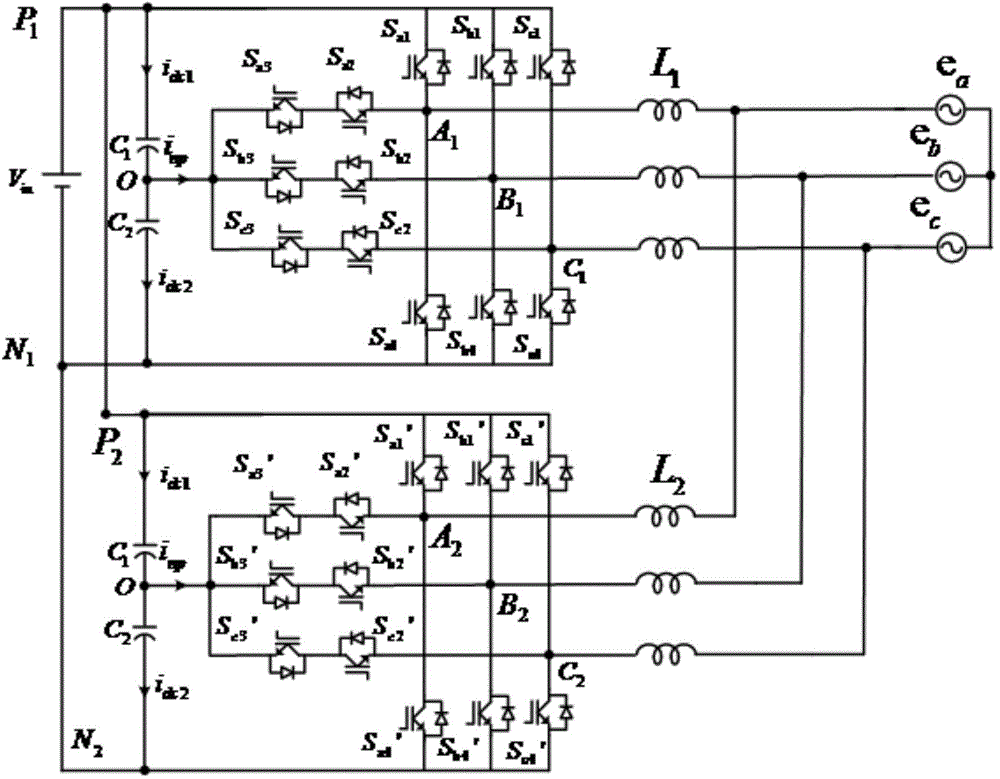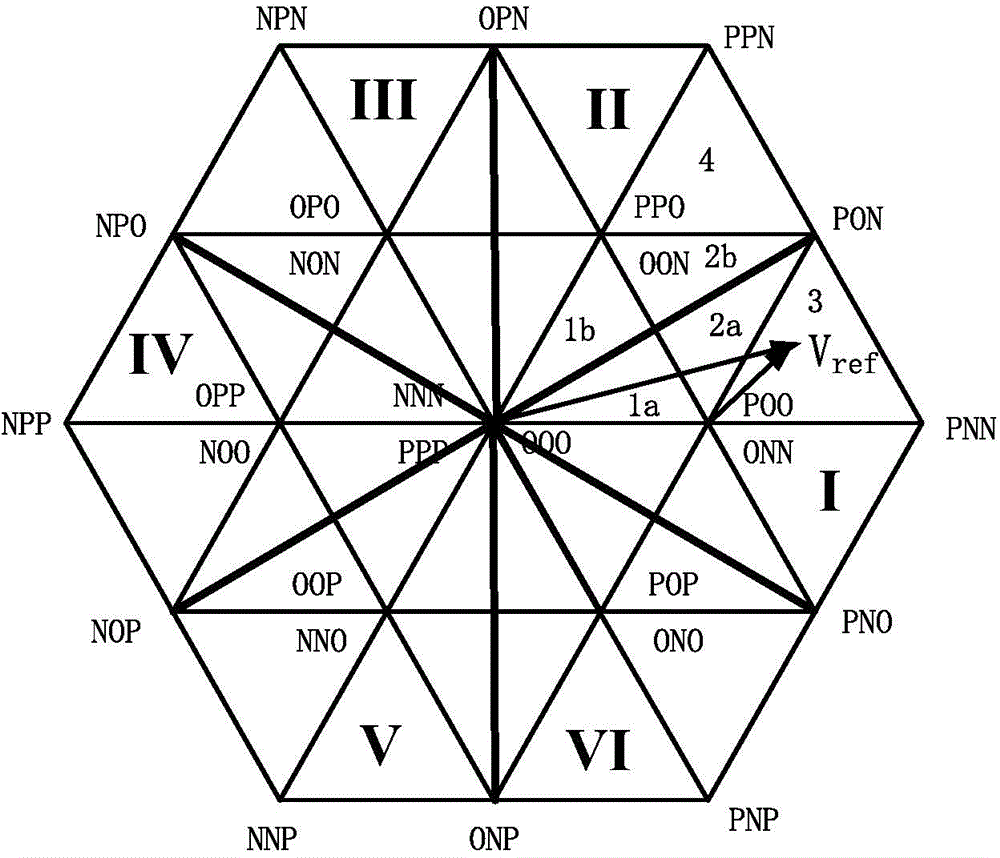Parallel circulating-current restraining and neutral-point balancing method of T-type three-level photovoltaic grid-connected inverter
An inverter and three-level technology, applied in photovoltaic power generation, AC power input conversion to DC power output, electrical components, etc., can solve output voltage waveform distortion, parallel inverter current stress imbalance, and affect IGBT switches Tube service life and other issues
- Summary
- Abstract
- Description
- Claims
- Application Information
AI Technical Summary
Problems solved by technology
Method used
Image
Examples
Embodiment Construction
[0058] The present invention will be further described below in conjunction with the accompanying drawings and embodiments.
[0059] A T-type three-level photovoltaic grid-connected inverter parallel connection neutral point balancing method includes the following steps,
[0060] The first step is to convert the three-level into two-level SVPWM, and calculate the state transition time of each phase bridge arm on the basis of SVPWM;
[0061] In the second step, the state transition time of each phase bridge arm is adjusted to obtain the final PWM signal.
[0062] In the first step, the specific method of converting three levels into two levels of SVPWM is,
[0063] In the first sector, U U * = V us * - V dc / 3 , U V * = ...
PUM
 Login to View More
Login to View More Abstract
Description
Claims
Application Information
 Login to View More
Login to View More - R&D
- Intellectual Property
- Life Sciences
- Materials
- Tech Scout
- Unparalleled Data Quality
- Higher Quality Content
- 60% Fewer Hallucinations
Browse by: Latest US Patents, China's latest patents, Technical Efficacy Thesaurus, Application Domain, Technology Topic, Popular Technical Reports.
© 2025 PatSnap. All rights reserved.Legal|Privacy policy|Modern Slavery Act Transparency Statement|Sitemap|About US| Contact US: help@patsnap.com



